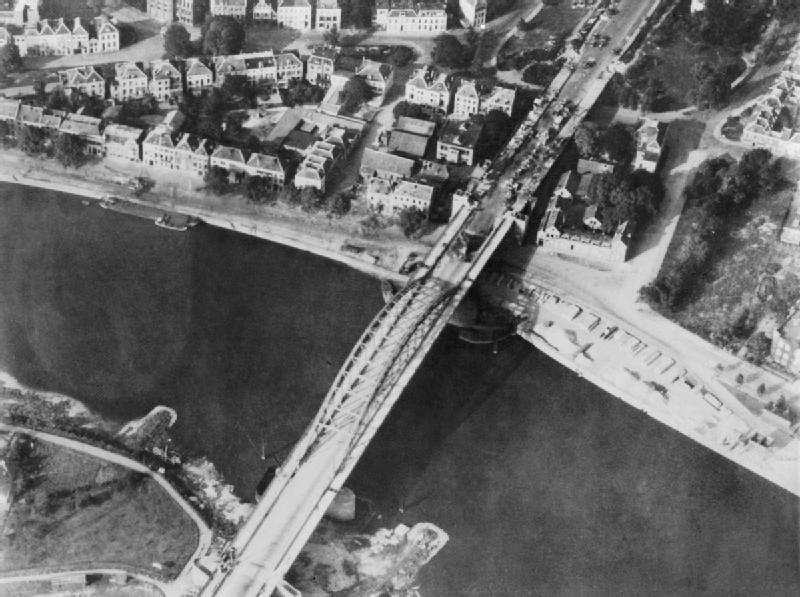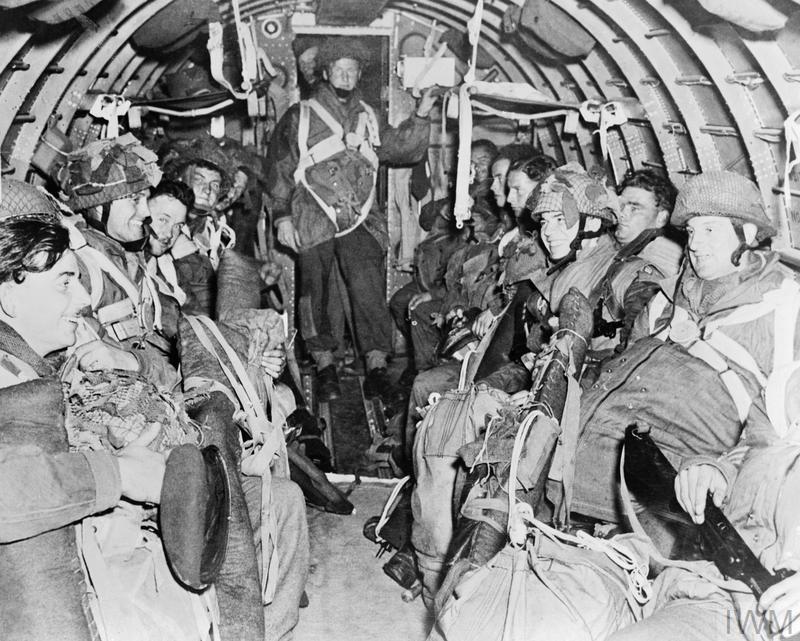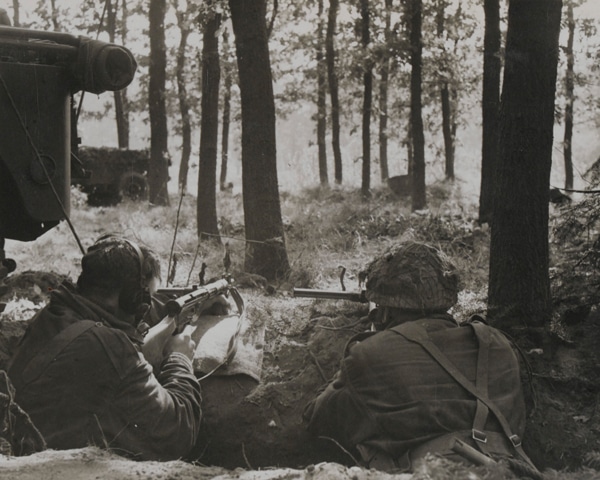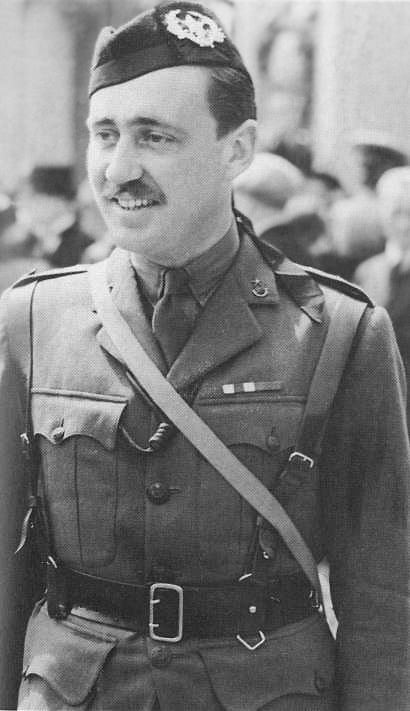
Operation Market Garden, the largest airborne operation in military history, was full of heroics, ineptitude, and bad luck. Envisioned and planned by the Allies to accelerate the defeat of Nazi Germany, Operation Market Garden fell short of its goal at the cost of thousands of casualties.
The eight-day (September 17 to September 25) mission offers a great example of how an ambitious and well-intended plan can go wrong and the importance of intelligence in military operations.
Let’s End the War by Christmas
On June 6, 1944, the Allied forces landed on Normandy, in Northern France. Catching the Germans unawares, the Allies secured a beachhead after a bloody struggle. But despite overwhelming superiority in every category, the American, British, Canadian, and French forces couldn’t break out from Normandy and recapture France. Despite lacking in everything, the Germans put up fierce resistance that only broke in August, after almost two months of serious fighting in the treacherous cottages and plains of Northern France.
 Operation Market Garden: The bridge at Arnhem after the battle. Note the destroyed German mechanized column that tried to force its way through the British defenses (Imperial War Museum)
Operation Market Garden: The bridge at Arnhem after the battle. Note the destroyed German mechanized column that tried to force its way through the British defenses (Imperial War Museum)After the breakout, the Allies found their footing and recaptured Paris and most of France within weeks. By September 1944, they were in the Netherlands and on the northern doorstep of Germany. But the River Rhine stood between them and their goal. Allied commanders thought the cost of breaching the formidable Siegfried Line across the Franco-German border to be too high to pay. So, British General Bernard “Monty” Montgomery came up with a plan to bypass the German static defenses by coming up from the north from the Netherlands and capturing several key bridges.
Allied planners sought to end the war in Europe by Christmas, and Operation Market Garden promised to do just that by allowing Allied forces to approach Berlin from the northwest while also encircling the Ruhr valley, the industrial heart of Germany.
Nowadays, any historian or history buff knows that when politicians or generals claim that they can end a war by Christmas, they are overestimating their capabilities (with World War One being a primary example of this).
After much pressure and debate, the Allied supreme command approved Operation Market
Garden
.

Operation Market Garden was an ambitious attempt to shorten the war by several months (Wikimedia.org).
The operation was divided into two parts: Operation Market, a massive airborne assault, and Operation Garden, a push by ground forces from the south to relieve the paratroopers.
For the “Market” part of the operation, three airborne divisions, the U.S. 82nd Airborne Division, U.S. 101st Airborne Division, and the 1st British Airborne Division (with the addition of a Polish parachute brigade) would capture three main and two smaller bridges.
The first bridge was at Eindhoven and only 13 miles from the frontlines. The second bridge was at Nijmegen at about 53 miles from the frontlines. The third and final bridge was at Arnhem, 62 miles away from Allied positions. The two smaller bridges were located between Eindhoven and Nijmegen.
For the “Garden” part of the operation, the British 30th Corps would push from the Allied positions along a highway and relieve the paratroopers.
All in all, close to 35,000 Allied paratroopers would participate in the operation, while the 30th Corps would assault with close to 5,000 vehicles, including tanks, armored personnel carriers, and other logistical vehicles.
 British paratroops of the 1st (British) Airborne Division in their aircraft during the flight to Arnhem. They had the toughest assignment of the operation, the capture of the bridge over the Neder Rijn at Arnhem. Although they managed to seize control of the northern end of the bridge, German resistance by SS Panzer Divisions was too strong.
British paratroops of the 1st (British) Airborne Division in their aircraft during the flight to Arnhem. They had the toughest assignment of the operation, the capture of the bridge over the Neder Rijn at Arnhem. Although they managed to seize control of the northern end of the bridge, German resistance by SS Panzer Divisions was too strong.“I Think We’re Going a Bridge Too Far”
During the planning of Operation Market Garden, a senior British officer, seeing the ambitious plan but also understanding its limitations, cautioned that the operation might be going a bridge too far. Allied paratroopers in Arnhem, in his view, would be too far from the advancing 30th Corps. His prophetic words were ignored as the planning for the largest airborne operation in the history of war entered the final phase.
Operation Varsity, which took place in March 1945, is the largest single-day, one-location airborne operation in history, but Operation Market Garden is the largest multi-day airborne operation in history.
On September 17, thousands of paratroopers dotted the Dutch skies as Operation Market Garden began. Initially, the operation was successful, as almost all paratroopers landed on their designated points, catching the Germans unawares and capturing several of their objectives.
However, the British at Arnhem had to walk 12 miles to the bridge after avoiding the anti-aircraft batteries the Allies had mistakenly thought were located there. On their way, British Paras encountered uncoordinated German resistance, which they pushed through, but at the cost of precious time.
The necessity to guard the landing zones for the follow-on drops tied down troops that otherwise could have joined the fight at Arnhem. In the end, only the 2nd Parachute Battalion, commanded by Lieutenant Colonel John Frost, reached the bridge but failed to capture it, instead occupying several captured houses on the north end of the bridge while waiting for reinforcements.
The first day of the operation was a mild success, with the American forces at Eindhoven and Nijmegen being the most successful.
 Gliders carrying paratroopers landing on their intended landing zones. Although thousands of aircraft supported Operation Market Garden, the Allies didn’t have enough assets to land or drop their entire airborne force on the first day (U.S. Army)
Gliders carrying paratroopers landing on their intended landing zones. Although thousands of aircraft supported Operation Market Garden, the Allies didn’t have enough assets to land or drop their entire airborne force on the first day (U.S. Army)Soon more problems began to emerge. On their way to the bridges, the 30th Corps encountered thousands of Dutch civilians, who believing liberation had come at last, slowed them down, festooning them with flowers and treats. Pleasant as it seemed, it slowed their advance and put the 30th Corps behind schedule.
The Germans, meanwhile, managed to blow up some smaller bridges, further stalling the Allied ground advance, and launched determined counterattacks in multiple locations with varying degrees of success. At Arnhem bridge, a mechanized SS column tried to force its way through the British Paras who had captured the northern part of the structure and failed, losing most of its men and vehicles.
Making matters worse for the Allies, the Germans discovered thorough plans of the operation in a downed glider. Knowing where and when the Allies would land more troops and supplies and which targets they were after gave the Germans the decisive upper hand.
On the second day, very few aircraft came to drop reinforcements and supplies due to bad weather, a development that particularly affected the British at Arnhem. As if the situation couldn’t get worse, Major General Roy Urquhart, the commanding general of the British paratroopers, was isolated from his troops and had to hide from the Germans for several days, leaving the battered Paras with no leader.
 American paratroopers retrieve supplies from a downed aircraft (U.S. Army).
American paratroopers retrieve supplies from a downed aircraft (U.S. Army).Using the captured plans, the Germans reinforced Nijmegen, shrewdly understanding that the middle bridge was the key for the success or failure of the Allied operation.
Meanwhile, the 30th Corps managed to reach the first bridge at Eindhoven and started working its way towards Nijmegen.
Final Stand at Arnhem
By the third day, the situation at Arnhem looked dire. The 2nd Battalion occupied just 10 houses on the north of the bridge that came under direct artillery and tank fire. Efforts to relieve them by the other battalions failed and the would-be rescuers had to fall back and soon also became surrounded by the Germans just outside Arnhem at Oosterbeek. Now, the whole division was surrounded in two different pockets.
“The fires on the bridge lit up the whole area like daylight and the heat from them made the bridge impassable for that night at any rate. Anyone attempting to move to the other side now would be silhouetted against the flames in a way that would turn such a gamble into suicide,” Lt. Colonel Frost, the iconic commander of the 2nd Battalion, said after the battle.
On day four, the 30th Corps linked up with the U.S. 82nd Airborne Division and attempted to push through Nijmegen. The Germans had reinforced their positions around the second bridge and prevented the tanks and armored personnel carriers of the 30th Corps from crossing it. But late in the day, a daring amphibious assault across the river by American paratroopers, who came on the bridge from the north, pushed the Germans back and managed to prevent them from destroying the bridge with explosives. The road to Arnhem was now open, but could the reinforcements get there in time to save the British Paras?
In the early hours of day five, the 2nd Battalion was finally overrun, ending an impressive struggle against vastly superior forces. Minutes before, the 2nd Battalion sent out this final transmission.
“Out of ammunition. God save the King.”
It never reached the Allies but was intercepted by the Germans.
 Operation Market Garden: British Paras on the outskirts of Arnhem (Imperial War Museum).
Operation Market Garden: British Paras on the outskirts of Arnhem (Imperial War Museum).Now, only approximately 3,500 British paratroopers out of the 10,000 remained surrounded in Oosterbeek. Their numbers were boosted by the arrival of the Polish airborne brigade, which had finally jumped after days of bad weather. But the Poles suffered heavy casualties as the Germans were waiting for them in their landing zones. Eventually, what remained of the Polish force linked up with the battered British Paras. In addition, the 30th Corps finally got within range of the British and Polish forces but couldn’t reach them as the Germans poured more and more troops in between them.
On days six and seven, the situation for the trapped British and Polish forces became desperate. The Germans were pouring everything they had at them in an attempt to force them to surrender.
“We have had a very heavy shelling this morning, September 23rd and now the situation is serious. The shelling is hellish. We have been holding out for a week now. The men are tired, weary and food is becoming scarce, and to make matters worse, we are having heavy rain. If we are not relieved soon, then the men will just drop from sheer exhaustion,” British Sergeant Dennis Smith wrote in his diary.
A German counterattack at Nijmegen almost succeeded and forced the 30th Corps to send troops back, sealing the fate of the British and Polish Paras. On the night of day eight, the remnants of the Allied paratroopers crossed the river and joined the 30th Corps, leaving behind their wounded comrades and all of their gear. Less than 2,000 out of the 10,000 managed to escape.
At What Cost?
The operation failed on several levels. First, Allied intelligence failed to spot two Waffen SS panzer divisions that were in the area for recuperation and refitting. Second, Allied planners failed to account for the bad weather that prevented the follow-on waves of paratroopers to join the fight. Third, British paratroopers were dropped far from their objective, losing the element of surprise and allowing the Germans to prepare a counterattack. Fourth, the 30th Corps could only advance on one main highway, making it the perfect place for German ambushes.
“We still could not believe that the 30th Corps would fail to come to our rescue. It was difficult to feel that there was enough genuine opposition to stop them. It was desperately disappointing that having done everything we had been asked to do we were now prisoners,” Frost said.

Operation Market Garden: The legendary John Frost, commander of the 2nd Battalion at Arnhem, later became a general (Wikimedia.org).
However, something that the Allied planners couldn’t plan for was the enthusiastic reaction of the local population that delayed the advancing paratroopers considerably. By that point, the Dutch people had been under the German boot for four years and the appearance of Allied troops sent them to the streets.
Operation Market Garden was a failure but it informed airborne doctrine for years to come. It showed that proper intelligence is critical for the success of any mission, especially one as complex and ambitious as Operation Market Garden. The battle, and particularly the action at Arnhem, was immortalized by the brilliant film “A Bridge Too Far.”
No comments:
Post a Comment